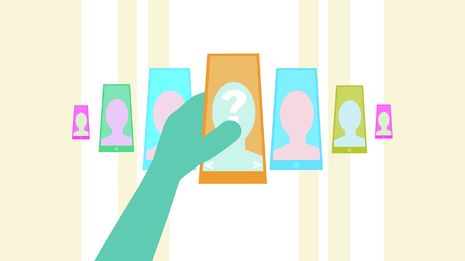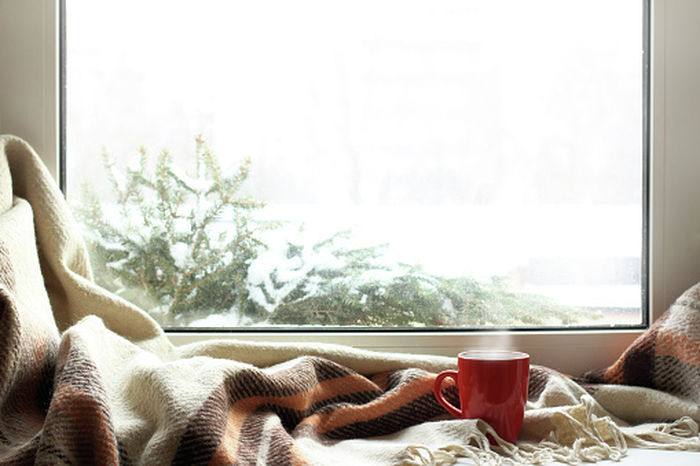I am exactly like other girls: Exploring TikTok’s branding of popular culture consumption
Emily Moss explores the large net Tiktok casts over our perception of ourselves and others

Content Note: This article contains a brief mention of mental illness and trauma
It’s that awkward time between the late afternoon and early evening. You have a few hours to kill, for once. What are you doing? Working out? Listening to that podcast? Going for a walk? No. No, you’re not. You’re probably scrolling through TikTok. If you’re among TikTok’s 1.2 billion users, and happen to be anything like me, a queer woman in her early twenties (which, given that women and Gen Z make up TikTok’s largest user demographic, isn’t hard), then our algorithms will most likely be throwing up similar videos.
Since the day I gave up my “actually I don’t have TikTok!” superiority complex and joined the platform last summer, I’ve been seeing a trend that is yet to wither and die in the recesses of the FYP, which follows a formula something like this: the user takes a trending audio, and then describes themselves — or sometimes, the type of person they’re attracted to — by listing “insert pop culture interests + insert some items consumed by the subject + insert gender identity of the subject”. To use some examples I’ve seen on my own FYP, you may see videos about a “bi male manipulator nose piercing tattooed Radiohead skaterboy”, a “cigarettes Lana Del Rey kohl eyeliner French New Wave Amy Winehouse Chanel No5 girlie” or an “oat milk latte Phoebe Bridgers antidepressants Sally Rooney black nail polish lesbian”. It’s like describing pedigree dog breeds, only with more painful self-awareness. Even if you’re not a TikTok user, you might find this familiar — the trend has migrated from TikTok over onto other social media platforms too, most notably Twitter.
“It seems that so many of us are, in fact, exactly like other girls”
This being said, it’s difficult to label this type of video a “trend” as such. The tendency to define yourself in relation to what forms of pop culture you consume seems representative of a desire for the subjects of these videos to develop a personal “brand”, which feels worlds away from the homogeneity of TikTok dance trends. Yet, brands can never get too personal. After all, you’re almost definitely not the only “Phoebe Bridgers lesbian” or “Radiohead skater boy”. Despite a lifetime of saying otherwise, it seems that so many of us are, in fact, exactly like other girls (...and boys). And that’s ok — if anything, it’s fun to see that there are plenty of other people out there on the Internet who share your interests, however niche you might have first thought them to be. Given the power of the TikTok algorithm and the willingness of younger generations to go out and meet people they met online, there will probably be quite a few future wedding speeches that involve the best man mentioning how the happy couple met through TikTok “because she commented “omg you have amazing music taste!” on his Aphex Twin video.” A truly modern love story. But is there a darker side to branding pop culture consumption? Maybe.
“This seems to border on the glamorization of art depicting human struggling and suffering”
Among the more troubling “brands” I’ve seen on my FYP, there are videos describing the “unhinged/feral/insane” modern Gen Z or millenial woman, embodied by the user’s apparent ability to relate to the likes of the female characters in Sally Rooney and Ottessa Moshfegh novels, TV shows like Fleabag, and music by artists like Fiona Apple, Marina, and Lana Del Rey. Particularly popular are declarations that they’re in their “Marianne from Normal People” or “Fleabag” era. All of these media, you’ll probably notice, are notable for depictions of what some like to describe as “unlikeable” and “deeply flawed” (read: real, human) female protagonists, mental illness, and trauma. The rise of this particular brand often seems to border on the glamorization of art depicting human struggling and suffering. Does its popularity derive from an ability to relate to the experiences of the female artists and their art, or does it result from a desire to define oneself as this particular “type” of woman, whose life experiences many Gen Z and millennial women may well relate to in the especially tumultuous times we’ve been living through lately? It certainly feels like there’s a new existential threat every week, and discussions around subjects like trauma and mental illness are becoming increasingly prominent in public discourse.
Yet, for those of us who came of age during the now-mythologised “Tumblr era” of the Internet in the early 2010s, the apparent glamorization of women-on-the-brink isn’t really anything new. Rockstar Girlfriend/Kate Moss/Alexa Chung/Messy French Girl et al. were being hero-worshipped well before the birth of TikTok. A scourge of Pinterest boards, Wattpad fanfiction, and Instagram fan accounts was unleashed, with legions of teens desperate to emulate an aesthetic approximate to the “unhinged/feral” aesthetic now being popularised on TikTok a decade later. Ironically, it’s many of these Tumblr era teenagers, now hitting their twenties, who are responsible for the TikTok Revival of the Messy Woman. And it makes sense; after all, for Gen Z and Millennials — the first generations to grow up under the shade of social media’s mighty umbrella — what better way to relive your adolescence than through the Internet that raised you?
Still, the long-term implications of this tendency to brand popular culture consumption remain undetermined. Like many of the trends that appear, and then disappear into the abyss of the TikTok algorithm, it offers an especially interesting insight into the minds of younger generations, and, more broadly, into how they perceive themselves and their interests. But if nothing else, it’s pretty fun — perhaps it’s nice to know that you’re not, in fact, the only girl in the world who has a shameful attraction to male manipulator bi skater boys, or the only lesbian with an addiction to oat milk lattes. Although we often forget it, social media was conceived to help users create communities around shared interests, so maybe, in its own way, that’s what this TikTok trend has set out to do.
 News / Clare Hall spent over £500k opposing busway 24 December 2025
News / Clare Hall spent over £500k opposing busway 24 December 2025 Comment / The ‘class’ of Cambridge24 December 2025
Comment / The ‘class’ of Cambridge24 December 2025 News / Caius mourns its tree-mendous loss23 December 2025
News / Caius mourns its tree-mendous loss23 December 2025 News / Girton JCR publishes open letter expressing solidarity with Palestine25 December 2025
News / Girton JCR publishes open letter expressing solidarity with Palestine25 December 2025 Comment / Yes, I’m brown – but I have more important things to say22 December 2025
Comment / Yes, I’m brown – but I have more important things to say22 December 2025










